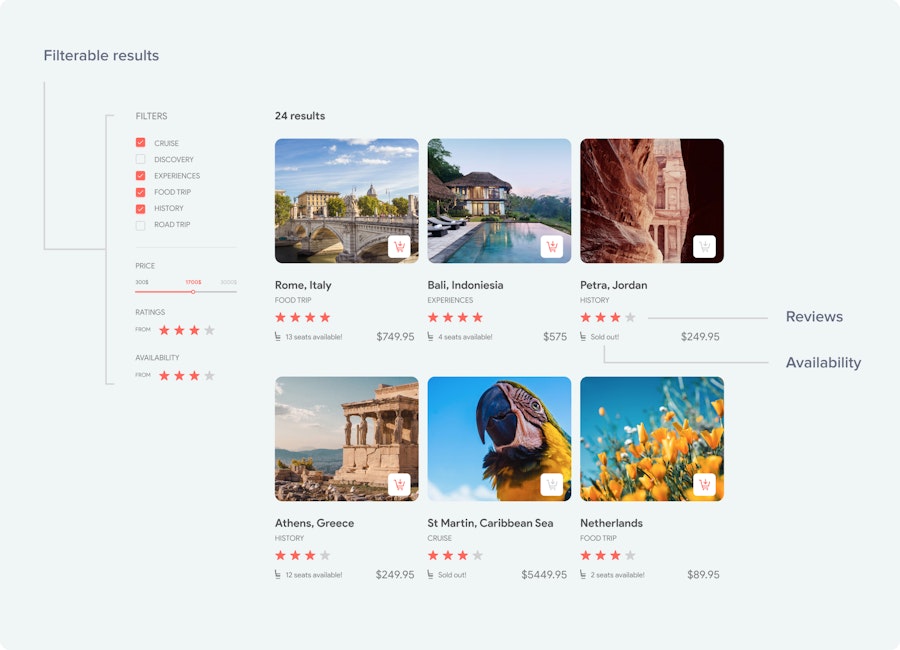Hydra Tech Insights
Stay updated with the latest in technology and gaming.
E-Commerce Design That Turns Browsers into Buyers
Transform your online store with designs that captivate and convert. Discover the secrets to turning casual browsers into loyal buyers!
Top 5 E-Commerce Design Elements That Drive Conversions
In the competitive world of e-commerce, having an aesthetically pleasing design is not enough to drive conversions. To maximize sales, it's essential to focus on specific design elements that have been shown to influence customer behavior. This includes features such as intuitive navigation, which simplifies the shopping experience, and high-quality product images that allow customers to get a closer look at what they are buying. Additionally, incorporating user reviews prominently on product pages can build trust and credibility, leading to higher conversion rates.
Another critical aspect of successful e-commerce design is the effective use of calls to action (CTAs). CTAs should stand out on the page and clearly convey the action the customer should take, whether it's 'Buy Now' or 'Add to Cart'. Furthermore, a mobile-responsive design is no longer optional; with more shoppers using their smartphones, ensuring that your site is fully optimized for mobile can significantly increase conversions. Lastly, leveraging a minimalistic design can help reduce distractions, allowing customers to focus on their shopping experience and make purchasing decisions more easily.

How to Optimize Your E-Commerce Site for Maximum Sales
Optimizing your e-commerce site for maximum sales begins with a user-friendly design. A well-structured layout not only enhances the shopping experience but also improves your search engine rankings. Start by ensuring that your website is mobile-friendly, as a significant portion of online shoppers use their smartphones. Additionally, utilize high-quality images and clear product descriptions to engage customers. Incorporate intuitive navigation with well-defined categories, making it easy for visitors to find what they are looking for quickly. Consider implementing a search function that predicts results, as this can dramatically reduce the time spent searching for products.
Another crucial aspect of e-commerce optimization is SEO. Focus on using relevant keywords in your product titles and descriptions to enhance visibility in search engine results. Utilize header tags (like <h1> and <h2>) effectively and ensure that your meta descriptions are compelling and include your target keywords. Don’t forget to optimize your site speed, as slow-loading pages can lead to high bounce rates and lost sales. Finally, consider adding customer reviews and ratings, as they not only improve trust but also enhance SEO by providing fresh, user-generated content.
What Makes an E-Commerce Website User-Friendly?
Creating a user-friendly e-commerce website is essential for enhancing the shopping experience and driving conversions. First and foremost, navigation should be intuitive; users should be able to find what they’re looking for without confusion. Implementing a clear menu structure and search functionality can significantly improve user experience. Additionally, product categories should be logically organized, and filters or sorting options should be provided to help shoppers refine their searches quickly.
Another crucial aspect of a user-friendly e-commerce site is mobile responsiveness. With a growing number of consumers shopping on their mobile devices, it's imperative that your website functions seamlessly across different screen sizes. Furthermore, incorporating high-quality images and detailed product descriptions can help build trust and encourage purchases. Lastly, offering multiple payment options and a straightforward checkout process can reduce cart abandonment rates and improve overall customer satisfaction.